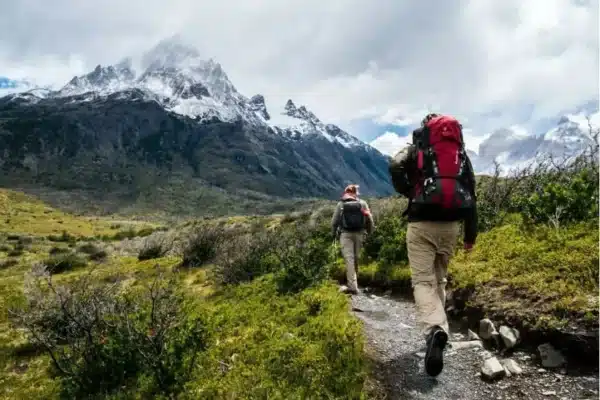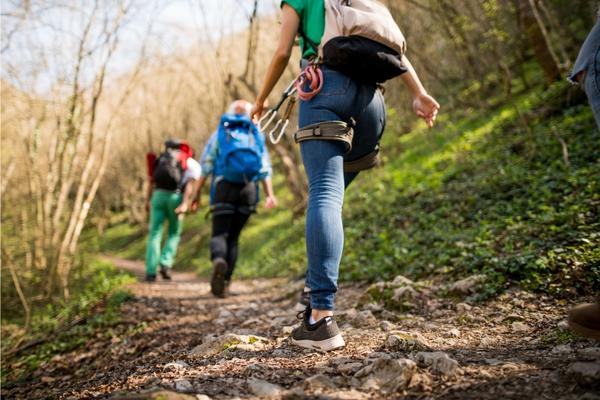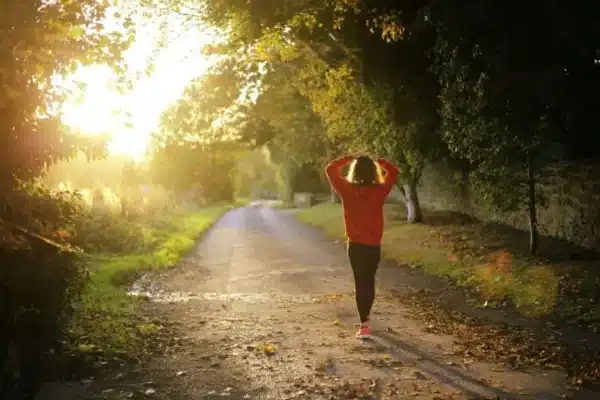Are you curious about the best tips for a successful hike? Adding variation to your workout routine is a great way to remain invested in your health and fitness because it helps you battle monotony and fatigue.
Therefore, if you’re looking for a bit of change this summer, why not take up hiking?
Hiking is one of the best outdoor activities to stay in shape and has benefits
For example:
- Hiking allows you to discover unknown places to visit within your local area and beyond.
- Reconnecting with nature can give your mind and body the boost it needs.
- Hiking gives you a chance to deviate from your usual schedule.
- Spending more time outdoors helps boost your body’s production of serotonin, making it one of the most natural and effective ways to fight stress.
- Hiking is a social activity, as you can use it as an opportunity to catch up with friends and loved ones.
However, hiking is not without its challenges. With that in mind, here are some top tips that you can use to pull off a successful hike!

Plan your route –
The more time you spend hiking, the more adept you will be at figuring out which route to take from place to place, especially if you return to the same spot frequently.
However, when you start, planning your route is more than a convenience; it’s essential to your safety. Spend some time researching different routes online and always ensure that you travel with a map.
While you may use your phone to navigate, some hiking locations may not have enough signal to guide you – meaning it’s time to learn how to read a map.
Pack Carefully –
One of the biggest mistakes you can make while hiking is being unprepared. While you should aim to travel light, you must ensure access to everything you need during your trips, such as plenty of water, sunscreen, and other first-aid tools. It’s worth investing in a quality backpack, such as a small tactical backpack. This way, you have plenty of space to carry everything you may need on your travels.
Head Out Early –
Getting enough sleep can be challenging, which means it’s often tempting to hit that snooze button a few times on the days when we have free time. However, heading out early is essential if you’re going on a hike in the summer months.
Also, this is because it enables you to carry out the more demanding part of your hike when temperatures are more relaxed, protecting you from the glare of the sun and overheating. Typically, it’s advised that you start summer hikes by no later than 11 am – though this varies depending on your destination.
Invest in Comfortable Footwear –
Investing in suitable footwear is vital no matter what terrain you hike in. Also, regular gym trainers may not provide you with the proper grip and support you need, especially if you’re hiking up hills and mountains. On a similar note, they can help keep your feet clean and dry when the weather is not on your side.
As a result, while hiking boots can be a little expensive, they are a worthwhile investment in your health and safety. They’ll also help you maintain higher comfort levels, so you can hike for longer without complaints or experiencing any pain. However, they take a little while to break in, so pack some plasters to prevent blisters or sores.

Bring along plenty of water –
You’re probably well aware of the importance of staying hydrated, especially as drinking more water considerably boosts your health and fitness levels.
However, you need access to plenty of water during your hike, as dehydration can quickly lead to disaster.
For example, you could get disorientated and wander off track, putting you in the path of danger. Ideally, adults should aim to drink around 2 cups of water (½ liter) every hour when hiking. Also, you may need to invest in a reusable water bottle that you can fill up each time you hike.
Don’t forget the snacks –
Healthy snacks are another must-have on a hike, even a relatively short one. Also, this is because they can help to give you the energy boost you need to keep going on a long and otherwise pretty tiring hike.
While there are many snacks, peanut butter may be your best option. Also, this is because it’s full of healthy fats and proteins (and it tastes delicious). Thus, this only leaves you with one question: crunchy or smooth?
Avoid hiking alone –
Hiking alone puts you at greater risk because you won’t have access to immediate help should you get injured.
As a result, you should always try to hike with a friend. If you can’t find friends who want to go hiking regularly, consider joining a local hiking group.
Alternatively, if hiking solo, stay in areas with high foot traffic and avoid going off-trail. This way, you’re more likely to come across other hikers who can help you if you are in need. You should also ensure you have noted the number of emergency contacts.
Be prepared to turn back –
When hiking, you’ll likely set a series of targets or goals. For example, you may aim to cover a certain distance or ascend (and descend) a hill or mountain.
While being goal-oriented when working out helps you stay motivated, you should also prepare to turn back when needed.
For example, if you suddenly feel unwell or a party member is injured, turning back and seeking help is the only option you should consider.
The Last Word on the 8 Best Top Tips You Can Use for a Successful Hike
On the other hand, do not push through an injury, as this will only worsen – and prolong your recovery, meaning you’ll be off your feet (and away from your workout) for even longer.




